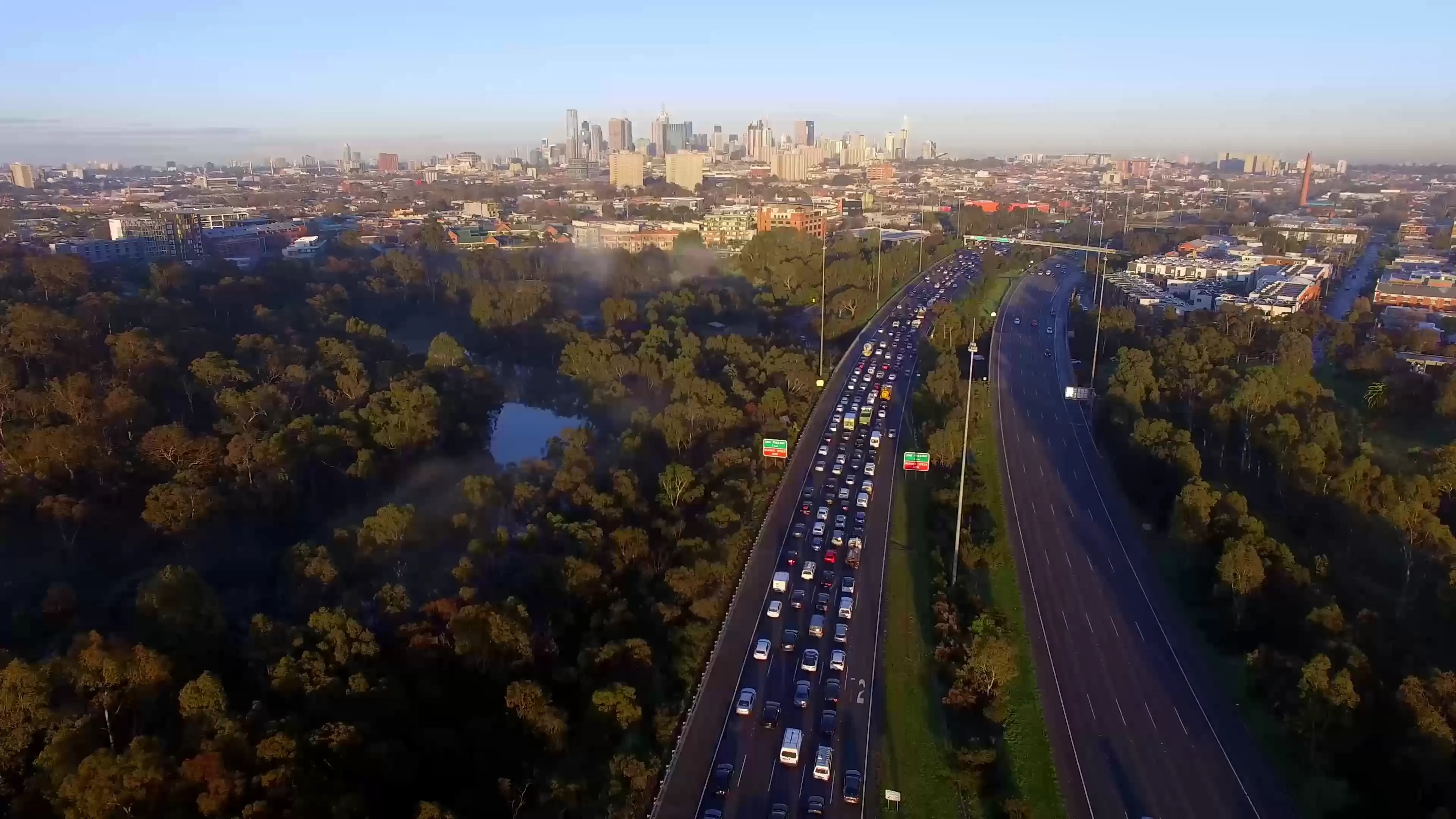
It’s time to put Australia’s car dependency in reverse

Repurposing our streets away from a focus on cars is crucial to creating more accessible and sustainable cities
Published 25 November 2024
Melbourne is projected to be the largest city in Australia by 2031–2032.
This rate of growth and the pressure it puts on our urban infrastructure, particularly transport infrastructure, is a big challenge.

After decades of sprawling, residential-only developments, Melbourne, along with all Australian cities, has become increasingly car-dependent – potentially impacting both the city’s liveability and the health of its residents.
Our recent research explores the consequences of car-dependency across 1692 cities around the world, finding that it leads to increased risk of road trauma, pollution and chronic disease.
There are many reasons for the rise in car-dependency across Australian cities.
Australia’s lack of affordable housing has pushed many residents to sprawling residential growth corridors.
These are usually on the fringes of a city or town, with a mix of urban and rural traits – known as peri-urban regions.
Unfortunately, these are the same areas with almost no easy access to public transport options, employment or essential services.
This lack of planning reinforces our car dependency, which in turn comes with increased transport costs and longer commute times – something that doesn’t affect residents in inner urban areas.
We recently developed an index to map access to essential services across Melbourne. It highlights just how significant the gap in access to services really is.
These maps show greater access to services in higher-socioeconomic areas of Melbourne, compared to outer peri-urban areas.
In order to reduce this entrenched inequality, we need to prioritise access and sustainability in our transport system.
Our outdated, car-dependent, twentieth-century transport system fails on both accounts.
Globally, cities are advocating for planning that supports ‘short distance’ cities.
From London and Paris to Melbourne, the goal of 15 or 20-minute cities is gaining momentum. The aim of these cities is that almost everything you’d need to access in day-to-day life – supermarket, doctor’s surgery, greenspaces and work – are all just a 15 to 20-minute walk or bike ride away, or at least by public transport access.
This move towards short distance cities – otherwise known as compact cities – not only embraces ecological sustainability by reducing greenhouse gas emissions, but can also deliver considerable health gains.
Our research estimated the health benefits of a compact city (either a 15 or 20-minute city) where car dependency was reduced by 10 per cent.
The result is better health outcomes and a reduction in chronic diseases across cities as diverse as Melbourne, Delhi and São Paulo.
Not only do compact cities address the issue of transport access, they also offer enormous potential to integrate electrified micro-mobility, like e-scooters and e-bikes.
Plagued by poorly supported and implemented share schemes, and a dearth of evidence about ‘what works’, micro-mobility hasn’t had the smoothest of introductions in some parts of the world.
Here in Melbourne, the local council recently banned shared e-scooter hire from the CBD. But in other Australian cities, like Brisbane, e-transport options are gaining acceptance among many people who might otherwise drive a car. In fact, the Queensland State Government is financially incentivising Queenslanders to move towards e-bikes as a transport mode.

E-mobility has a number of advantages: it’s been shown to increase health benefits, reduce the need for parking spaces and reduce private motor vehicle ownership.
Sure, electrified micro-mobility may be associated with an increased risk of falls or injury – especially among private users rather than share schemes – but the opportunity to repurpose current road infrastructure to ensure separate and safe infrastructure for micro-mobility users will mitigate the risk.
We can achieve this by re-purposing our roads to accommodate a wider range of transport options that co-exist with people who genuinely need to use cars.
Look at New York City, which is rapidly repurposing its roads to deliver 800 kilometres of protected cycling lanes – reclaiming the equivalent of thirteen Central Parks worth of public space from cars.
Repurposing roads for sustainable transport is important, but so too is understanding how our established transport systems, particularly road infrastructure, effects urban heat we are exposed to in cities.
Land in cities is at a premium, and the land given over to road transport is substantial – and often hot.
Streets make up between 20–50 per cent of land-use in cities (not including off-street parking areas). When parking is also factored in, cities like Houston in the United States have allocated an extraordinary 65 per cent of their total land to cars and trucks.
In the City of Melbourne – where many still lament that there’s no parking to be found – car spaces occupy 460 hectares of space, equivalent to 113 MCGs.

There is enough parking, and just too many cars.
Our recent research shows that our cities heat up substantially as we transform the urban landscape towards increased amounts of hard, impervious surfaces (namely the ever-increasing road surfaces).
Reducing green spaces in favour of roads and parking spaces results in air temperature increases of up to 5°C.
So, if we want a cooler city, we need to reduce space dedicated to roads and parking.
To prioritise access and sustainability in Melbourne’s transport system, a cost-effective and timely response is needed to ensure the city continues to deliver on liveability.
One possibility for a cost-effective transition would be road pricing – that is charging road users directly for the use of the infrastructure.

Currently, our motor city (in fact, all motor cities) is developed and then maintained through the financial subsidisation and prioritisation of space for cars; reversing this principle is at the core of delivering accessible and sustainable transport systems.
Pricing for road infrastructure is not new in Australia.
It typically comes in the form of toll roads and parking levies, but these approaches still facilitate our car dependency.
A road pricing policy that places a price across the entire transport system has consistently been shown as the single most effective intervention to reduce car dependency.
Melbourne, along with other Australian cities, needs to be a first-mover when it comes to a policy like this.

Our team is currently undertaking road pricing trials, using simulation models to explore the potential of population-based road pricing to not only deliver accessibility and sustainability, but safety too.
The biggest cost associated with our car dependency arises from deaths and serious injuries incurred while using the current transport system. Each year, Victoria’s Transport Accident Commission handles close to 50,000 claims for death, injury and rehabilitation costs associated with the failure of our current car-dependent transport system.
When we introduce more cars into the system, through poor planning and car-dependent developments, this number increases.
This inherently unsafe system translates to more than AU$16 billion worth of liability for Victorians.
Moving the focus of our transport system to access and sustainability would deliver not only health, environmental and societal gains for Australian cities, but significant financial benefits too.




